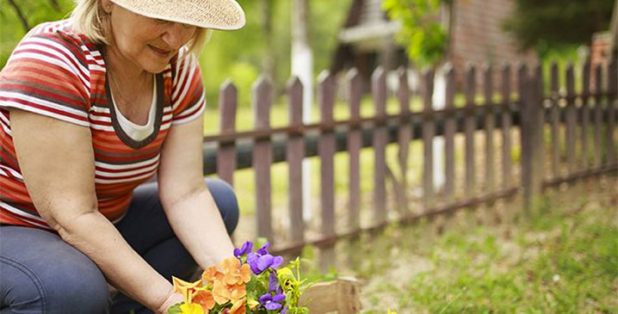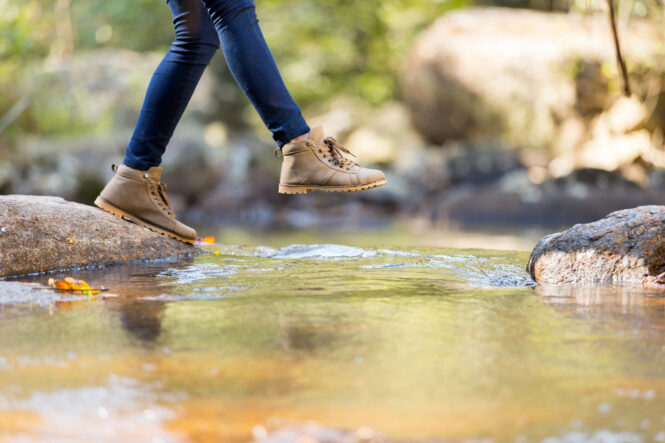For the past several weeks, those colorful harbingers of spring – crocuses, daffodils, tulips – have begun to make their way out of the ground for their spring debut. In many regions of the U.S., planting season has begun!
For many, gardening is an enjoyable and often healthy low-impact activity for those with arthritis, however it is important to take proper precautions as gardening has the potential to aggravate pre-existing joint pain — especially of the wrists, shoulders, and knees. But like many forms of exercise, when done with care, gardening can be good for your joints because it helps maintain flexibility and range of motion, not to mention it gets you outside.
Here are some tips for how to tend to both your joints AND your flowers.
1. Try container gardening.
Bending and kneeling can be challenging when you have achy knees. One solution is to bring the soil closer to you by growing your garden in containers or raised beds. There’s a staggering variety of styles, sizes, and heights, plus containers tend to be less hospitable to weeds. Another advantage is that they can be moved into the shade or sun depending on the flowers’ daily needs. Choose lightweight pots or put them on wheeled bases for easier transfer.
2. Plant a low maintenance garden.
If you don’t want to go the container route, find plants that are low maintenance, especially if you have days when joint pain limits your activity. Choose plants that don’t require deadheading, pruning, or frequent watering, such as evergreens, bulbs, and many perennials. Consider dedicating an area to wildflowers, which require no care.
3. Use mulch to minimize weeding.
A repetitive motion like weeding can be tough on the wrist and kneeling for an extended period can wear on the knees. Utilizing knee pads or cushions while kneeling can alleviate some of the stress on the knees. Adding a thick 2-3” layer of mulch over your garden can prevent stubborn weeds from peppering your garden. Be sure not to add mulch over seeds and spread it around your plants so you don’t suffocate them.
4. Utilize proper tools for support.
There are many well-designed tools that can reduce stress on your joints. Garden stools, kneepads, and kneeling pads can lessen the load on your knees. Use long-handled or extendable tools so you can stand instead of stooping while gardening. Easy-to-grip tools and ones with ergonomic handles are good for wrist arthritis sufferers. Wrist splints may provide additional support for gardening tasks that put pressure on your wrists. Wear good quality gardening gloves over the splints to keep them clean and dry.
5. Stretch beforehand.
Stretching is critical before starting any physical activity, as it lubricates the joints and helps maintain range of motion. It’s tempting to skip, but don’t!
6. Find ways to prevent the overuse of specific joints.
Switch from planting, weeding, deadheading, watering, and fertilizing to avoid overuse of any one joint. Spread the chores over several days if necessary. Take frequent breaks so you don’t overdo it. And as always, if you start to feel pain, give it a rest.
7. Don’t lift too much.
Avoid lifting heavy loads whenever possible as it can aggravate arthritic joints. Try and recruit help with moving those larger items such as bags of soil or large plants. If you do need to lift something heavy, bend from your knees not your back and try to keep it close to your body. For wrist arthritis sufferers, avoid having your wrists bear the full weight of heavy items. For example, if you’re transporting a large shrub for planting, bend with your knees and lift it using your forearms, keeping your elbows tucked to minimize stress on your wrists. A wheelbarrow can be your best friend if you need to lug heavy bags of topsoil or mulch.
So go get your hands dirty. And then enjoy the fruits and flowers of your labor!
If your joint pain has you concerned about gardening, you may want to talk to an orthopedic specialist about your symptoms. Try our Find a Doctor tool or Contact Us for more information.




